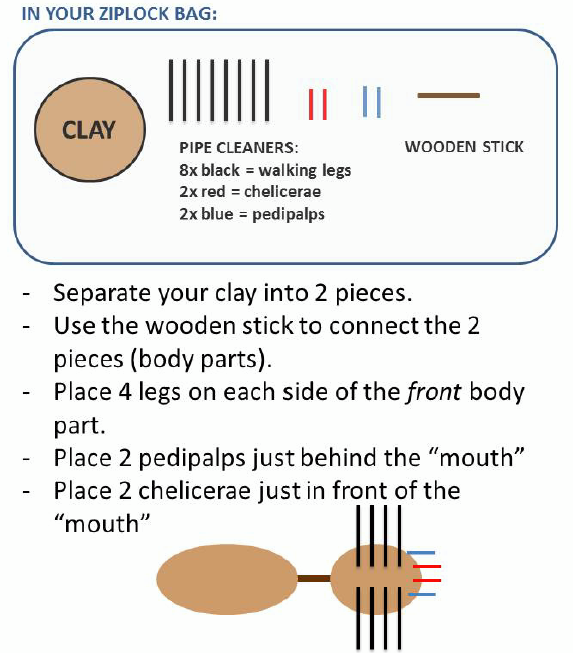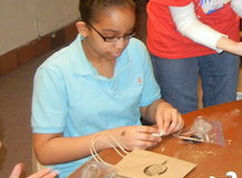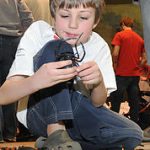Create a Chelicerate
GOAL: To introduce the audience to chelicerates and their basic characteristics. Namely:
(i) they are composed of two body parts (tagmata), (ii) they all have a pair of appendages in front of the mouth termed chelicerae, and (iii) they all have a second pair of appendages directly behind the mouth called pedipalps.
BACKGROUND: Like all arthropods, chelicerates (a subphylum of the Phylum Arthropods) have segmented bodies with jointed appendages. They have an exoskeleton made of chitin and protein and must molt their skin to grow. The living chelicerate groups include the Arachnida, Pycnogonida (‘sea spiders’) and Xiphosura (horseshoe crabs). Chelicerates are an ancient group of animals that likely originated in the Cambrian period (~541 – 485 million years ago). An extinct group of chelicerates, eurypterids (sea scorpions), are known from fossils dating back 445 mya. Eurypterids were giant predators of the Paleozoic seas; they represent the largest known arthropods that ever lived, reaching more than 8 feet in length.


MATERIALS: Ziplock bags pre-filled with the following:
- Small block of air-dry clay
- 8 small cut pieces of black pipe cleaner (representing walking legs)
- Wooden stick to hold two body parts together
- 2 small cut pieces of red pipe cleaner (representing chelicerae)
- 2 small cut pieces of blue pipe cleaner (representing pedipalps)
- Instruction sheets placed on the table so participants can work independently if they choose.



